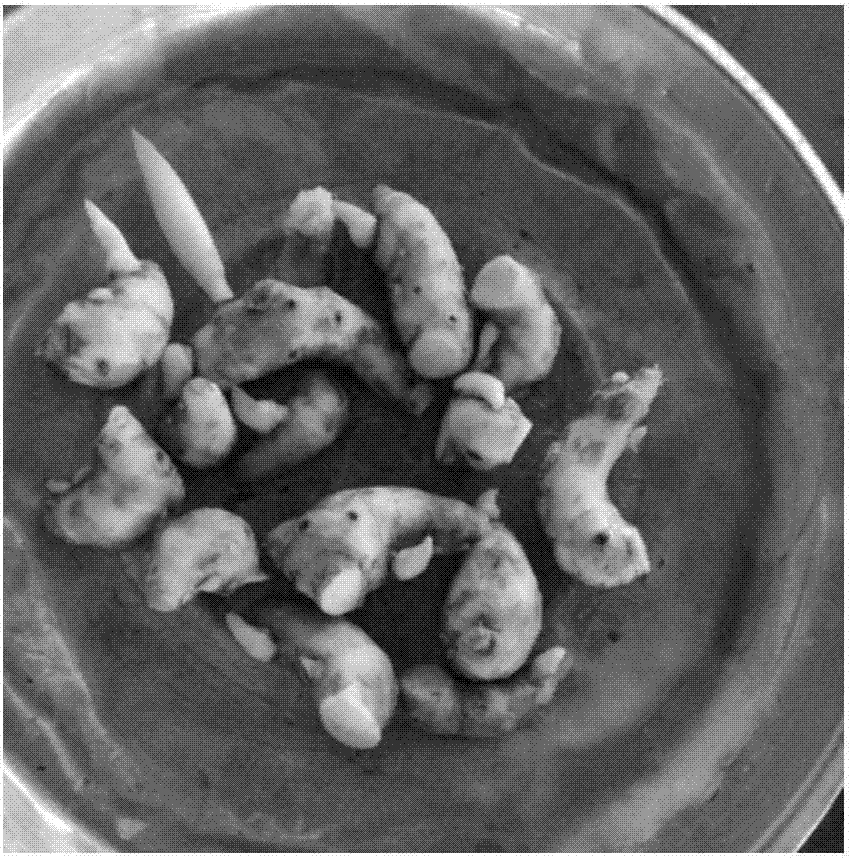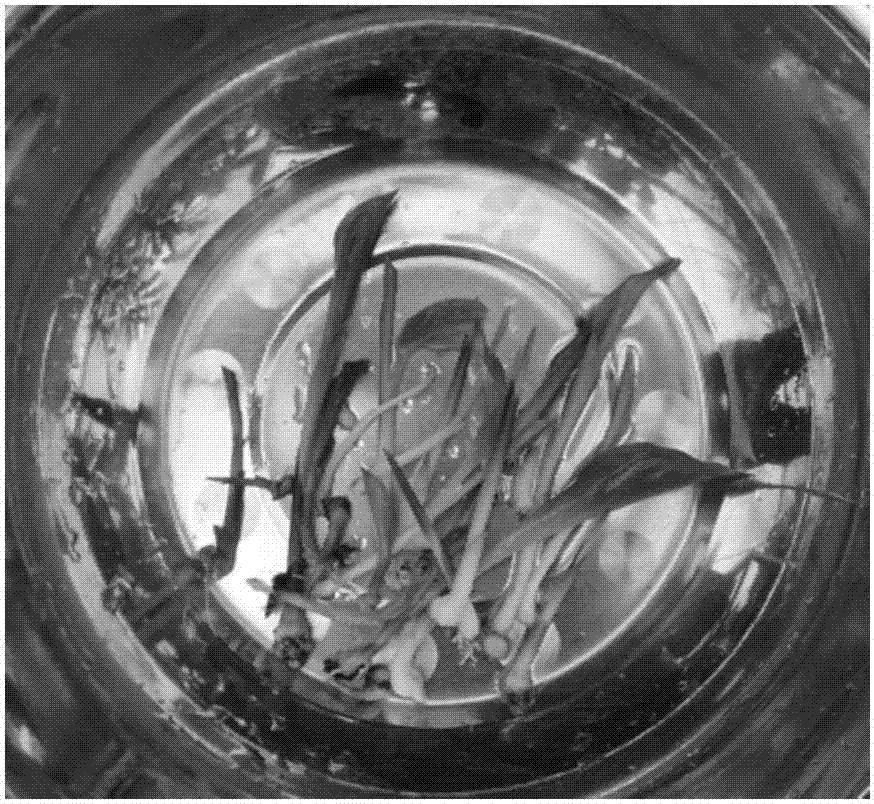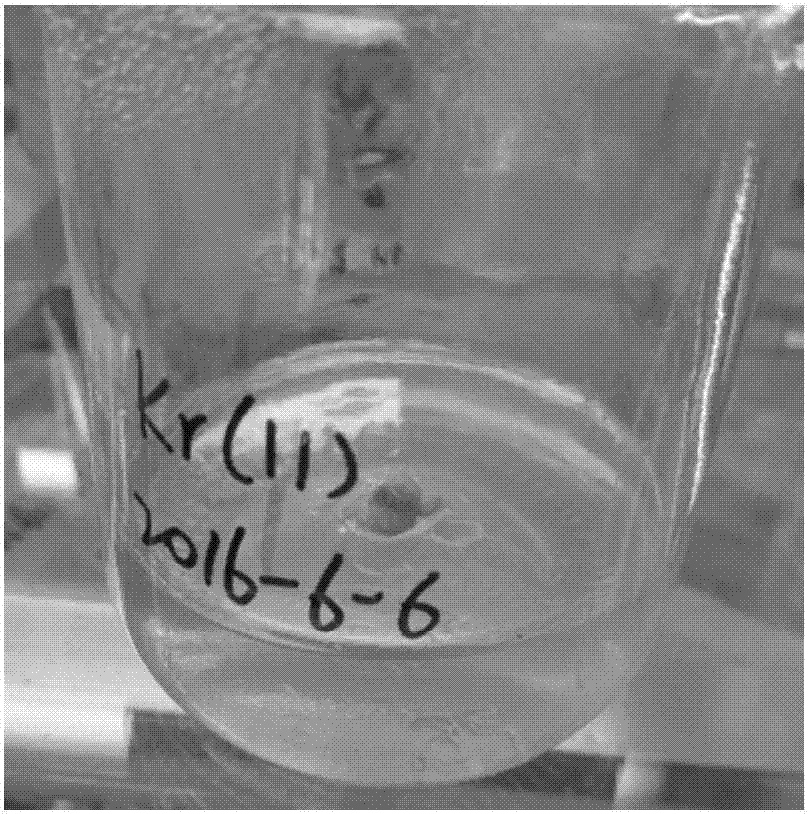Method for inducing regenerated plant from blastema part of Kaempferia rotunda rhizome
A technology for regenerating plants and Hainan Panax notoginseng, which is applied in botanical equipment and methods, plant regeneration, horticultural methods, etc., can solve the problems of low seedling emergence rate, low callus differentiation emergence rate, failure, etc., so as to improve the reproduction coefficient, improve the Tissue culture reproduction efficiency, improve the effect of shortening
- Summary
- Abstract
- Description
- Claims
- Application Information
AI Technical Summary
Problems solved by technology
Method used
Image
Examples
Embodiment 1
[0041] A method for inducing regeneration of plants at the base of root buds of Panax notoginseng, comprising the steps of:
[0042] (a) Pre-treatment of explants: collect the rhizomes of Sanqi notoginseng and clean them with tap water, cut off the storage roots and fibrous roots on the rhizomes, put them in 0.3% carbendazim powder solution for 30 minutes, and then take them out dry surface moisture such as figure 1 shown. Then put it into the washed and disinfected river sand, germinate in the incubator at a constant temperature of 33°C, and wash the buds, such as figure 2 As shown, the buds are 6-18cm high. After disinfection, the leaves and shoot tips on the rhizome buds were cut off, and the base of the buds was reserved as explant material.
[0043] (b) cluster bud induction: inoculate the sterilized explants on the induction medium and cultivate; image 3 As shown, the explant is the base of the rhizome bud, about 1-2 cm high, and the green spots visible to the nake...
Embodiment 2
[0053] A method for inducing regeneration of plants at the base of root buds of Panax notoginseng, comprising the following steps:
[0054] (a) Pre-treatment of explants: collect the rhizomes of Sanqi notoginseng and clean them with tap water, cut off the storage roots and fibrous roots on the rhizomes, put them in 0.1% carbendazim powder solution for disinfection for 40 minutes, and then take them out Allow surface moisture to dry. Then put it into the washed and disinfected river sand, germinate at a constant temperature of 33°C in an incubator, and wash the rhizome buds. After disinfection, the leaves and shoot tips on the rhizome buds were cut off, and the base of the buds was reserved as explant material.
[0055] (b) Cluster bud induction: Inoculate the sterilized explants on the induction medium and cultivate until cluster buds are formed at the base of the explants. It takes about 65 days to grow 2 to 3 cluster buds. The initiation rate was 83.60%, and the germinatio...
Embodiment 3
[0065] A method for inducing regeneration of plants at the base of root buds of Panax notoginseng, comprising the steps of:
[0066] (a) Pre-treatment of explants: collect the rhizomes of Sanqi hainan, clean them with tap water, cut off the storage roots and fibrous roots on the rhizomes, put them in 0.2% carbendazim powder solution for 35 minutes, and then take them out Allow surface moisture to dry. Then put it into the washed and disinfected river sand, germinate at a constant temperature of 33°C in an incubator, and wash the buds. After disinfection, the leaves and shoot tips on the rhizome buds were cut off, and the base of the buds was reserved as explant material.
[0067] (b) Cluster bud induction: Inoculate the sterilized explants on the induction medium and cultivate until cluster buds are formed at the base of the explants. It takes about 63 days, and 3 to 4 cluster buds can be formed. The explants start The rate is 95.70%, and the germination index is 3.50; the c...
PUM
 Login to View More
Login to View More Abstract
Description
Claims
Application Information
 Login to View More
Login to View More - R&D
- Intellectual Property
- Life Sciences
- Materials
- Tech Scout
- Unparalleled Data Quality
- Higher Quality Content
- 60% Fewer Hallucinations
Browse by: Latest US Patents, China's latest patents, Technical Efficacy Thesaurus, Application Domain, Technology Topic, Popular Technical Reports.
© 2025 PatSnap. All rights reserved.Legal|Privacy policy|Modern Slavery Act Transparency Statement|Sitemap|About US| Contact US: help@patsnap.com



